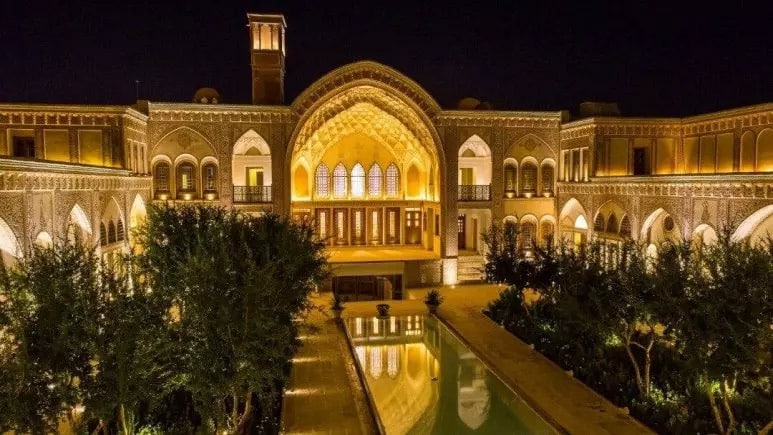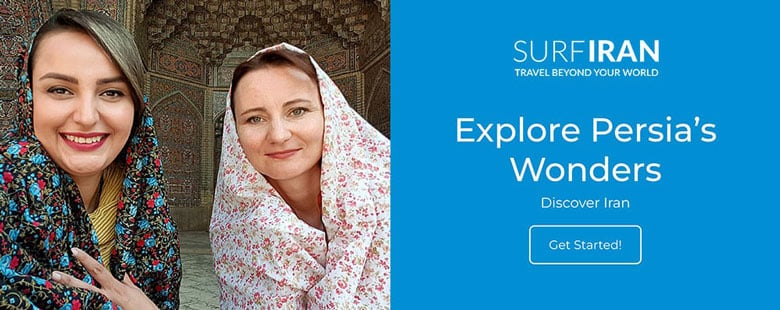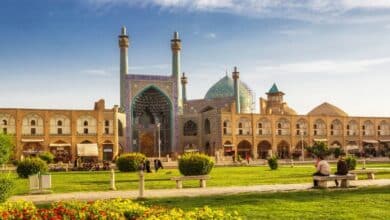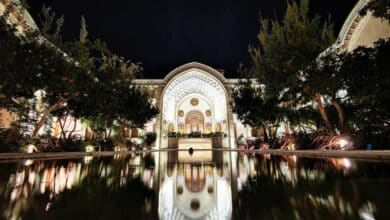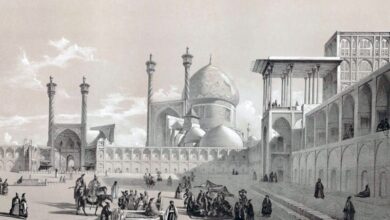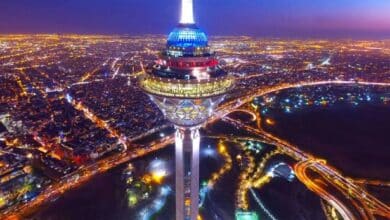Agha Bozorg Mosque: Kashan’s Architectural Marvel
A Cultural Experience Unlike Any Other

Agha Bozorg Mosque is one the most magnificent tourist attractions and the Architectural Marvel of Kashan. One of the most important characteristics that makes this grand mosque unique in the world is the number of floors, which is the only 5-floor mosque in the world.
Within this mosque, a school has also been established where scholars (students of Islam and religion) study. In the following, we will discuss the history, architecture and important features of Agha Bozorg Mosque.
Contents
History of Agha Bozorg Mosque
Agha Bozorg Mosque was built with the personal investment of a man named Haj Mohammad Taqi Khanban. The mosque dates back to the Qajar era, with its construction starting during the reign of Mohammad Shah and completed during the reign of Naser al-Din Shah.
It is interesting that a school was built inside the mosque for the son-in-law of Haj Khanban, Mulla Mahdi Naraqi to educate his students. Today, this school has become one of the most visited places in Kashan. Agha Bozorg mosque and shool is located in the old neighborhood of Kashan known as Fazel Naraqi.
Architecture of Agha Bozorg Mosque
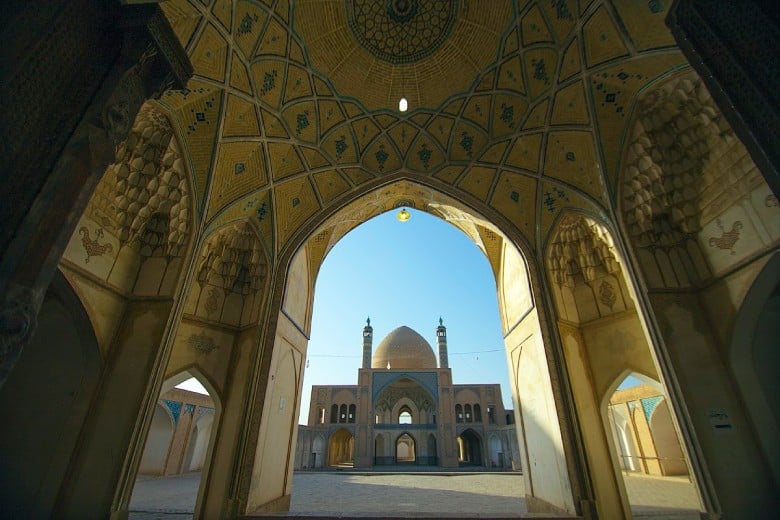
The Agha Bozorg Mosque features astonishing architecture shaped by the fusion of Iranian and Islamic culture and art. Many architectural elements of this mosque date back to the Safavid era.
Foundation of Agha Bozorg Mosque
The construction of this mosque utilized the “Ghodal Baghcheh” design, which is one of the elements of Iranian architecture. In this design, the building begins with one underground floor, typically used in arid climates. This architectural style enhances the building’s resistance to earthquakes and moderates the internal climate.
Interestingly, the building’s texture is made from local soil. the materials used for construction were sourced from the earth of the surrounding area to minimize energy consumption.
Interesting Facts About the Architecture of Agha Bozorg Mosque
1. The building features windcatchers inspired by Iranian architecture that help circulate fresh air into the structure, particularly in the arid region of Kashan.
2. The dome of this mosque Is built on eight large columns to facilitate the entry of pleasant air, especially during the hot summer months.
3. The interior decorations of the mosque include painting, geometric patterns, ornamental plastering, and beautiful tile work, all done far from extremes and follows the principles of Islamic architecture.
4. On the main door, there are nails corresponding to the number of verses In the Quran.
Different Sections of Agha Bozorg Mosque
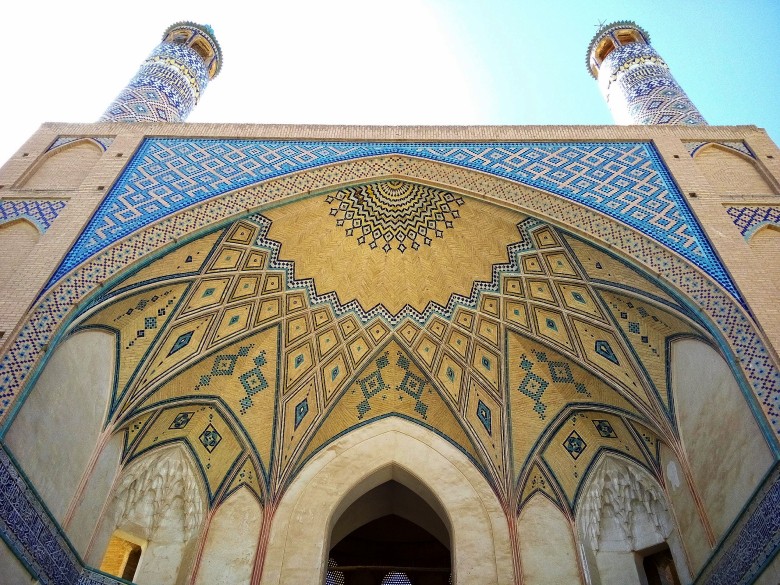
This mosque has various sections such as the Pirneshin (Elderly platform), entrance portal, Hashti (vestibule), central courtyard, Shabestan (prayer hall), Zemestan Neshin (Winter Area) and others, each featuring unique architecture and practical characteristics.
Pirneshin
At the front of the entrance door, there are several platforms known as “Pirneshin,” which, as the name suggests, were used for to rest the elderly individuals passing through the area.
Entrance Portal
It is one of the most important parts of the building, it features a valuable inscription above it with a piece of poetry written on It. On the main door of the mosque, you can see decorations that are a combination of various arts including wood carving, geometric designs, and floral motifs.
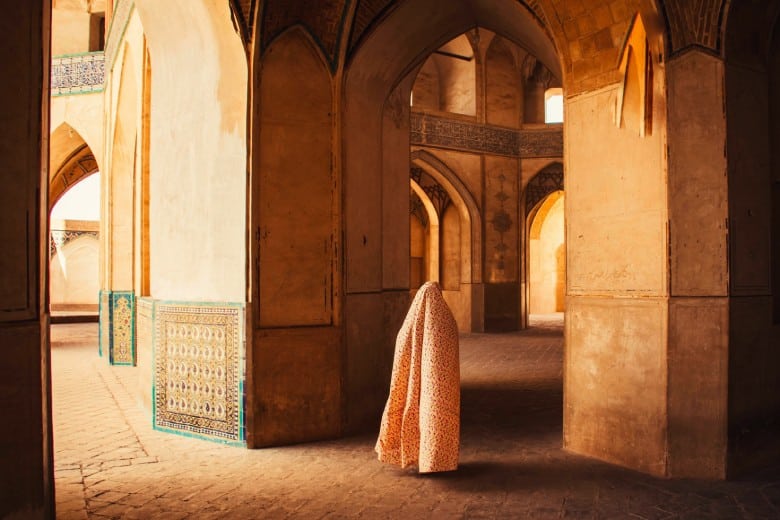
Hashti
A symbol of Iranian architecture, this area Is completely covered and octagonal, separated from the main section by a corridor. The room for the mosque attendants is located in the Hashti.
Zemestan Neshin
This part of the open area in front of the building allows more sunlight to enter.
Main Hall
Located at the upper part of the building and at the end of the courtyard, this area features a brick dome along with two minarets that capture attention.
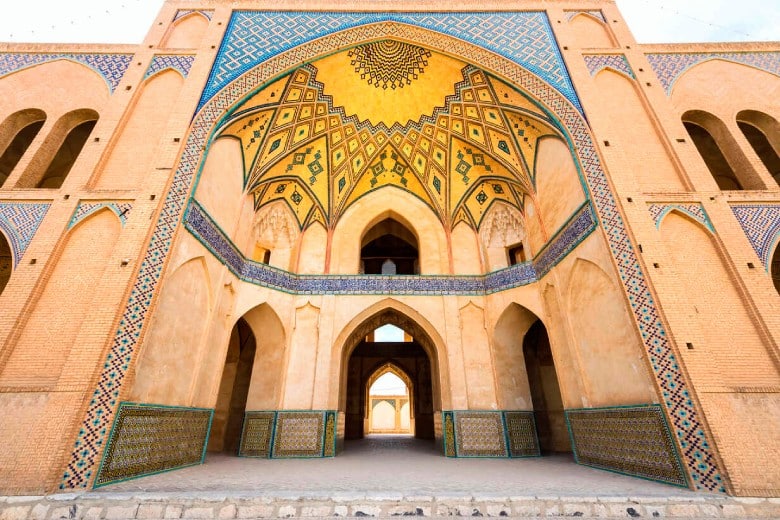
Shabestan
The mosque has three Shabestans. The third shabestan, where the mosque is situated, is designed as a half-level located on the southern part of the building. There are openings in the ceiling to allow light into the shabestan. Interestingly, the space of the mosque is open from all four sides, which differs from Architectural style of traditional mosques.
Snow thrower Yard
Another courtyard within this building Is the Snow thrower courtyard, located behind the dome room, which serves to drain snow from the dome. Accordingly, there is a well in the middle of the courtyard where snow Is dumped. Interestingly, a chain is placed on top of the dome to help scrape off the snow and drop It into the courtyard.
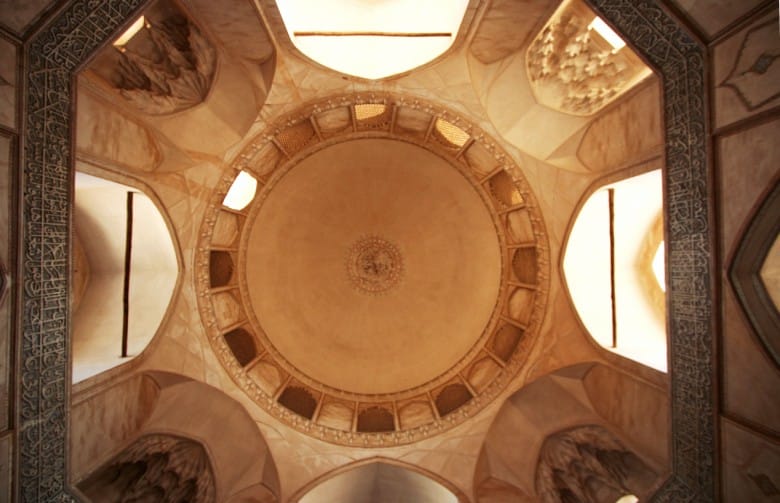
School of Agha Bozorg
In the lower part of the building, there is a school and courtyard with a central pond and four gardens. Around this pond, you can see 12 chambers, a storage room, corridors, and shabestans. This area also features a cellar with two tall windcatchers. The architecture of this school is similar to that of the Chahar Bagh and Sadr schools in Isfahan.
Tomb of the Naraghi Family
This tomb is another section of the Agha Bozorg Mosque, located in the eastern part and the outer space of the mosque.
Visiting Hours for Agha Bozorg Mosque in Kashan
The best seasons to visit this mosque, located in the desert city of Kashan, are spring and autumn when the weather is milder. The visiting hours for this mosque are from 9 AM to 8 PM. However, it is important to note that during prayer times, It is better to pause your visit out of respect for the worshippers.
Wrap it Up
Agha Bozorg Mosque in Kashan is one of the largest and most magnificent mosques in the city, situated on Fazel Naraghi Street In the central area. Additionally, there are other attractions around the Agha Bozorg Mosque and School, such as the traditional Kashan Bazaar, the Tabatabai House, the Borujerdi House, and the Sultan Amir Ahmad Bathhouse, which you can enjoy alongside the visiting the mosque.
We recommend including a trip to the beautiful city of Kashan in your travel plans.
FAQs
Where is Agha Bozorg Mosque located?
Agha Bozorg Mosque and School are located on Fazel Naraghi Street in the city of Kashan.
In which era was Agha Bozorg Mosque built?
The mosque dates back to the Qajar period, with construction beginning during the reign of Mohammad Shah and completed during the reign of Naser al-Din Shah.
What sections make up Agha Bozorg Mosque?
Agha Bozorg Mosque consists of various sections, including the elder’s area (Pir Neshin), the entrance and portal, the vestibule (Hashti), the winter area (Zemestan Neshin), the main courtyard, the prayer hall (Shabestan), the school and Its courtyard, and the tomb of the Naraghi family.
